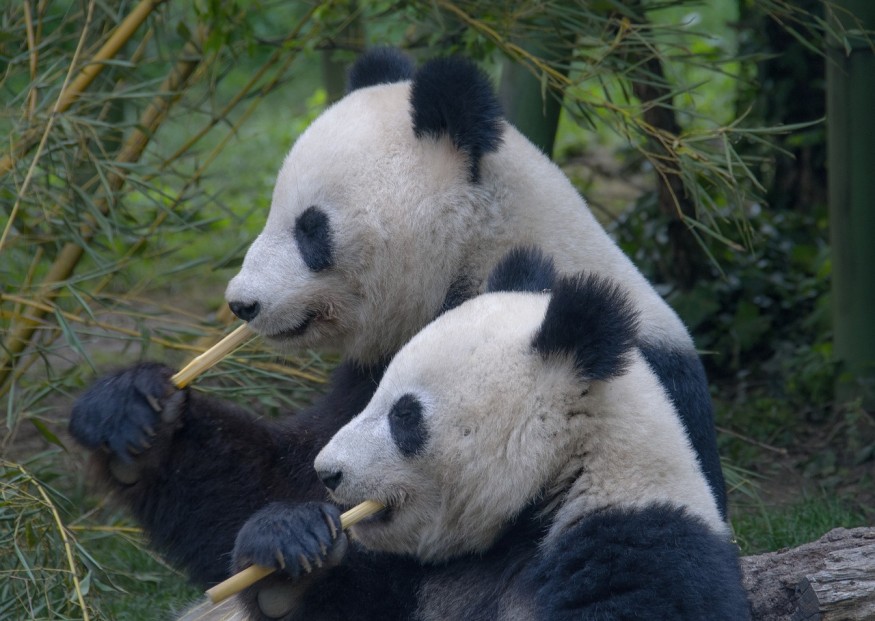Panda is one of the most recognized symbols of conservation, as these endearing animals have been pulled out from the brink of extinction. However, studies reveal that protecting the giant panda left other predators in the habitat: leopards, snow leopards, wolves, and Asian wild dog populations showed a dramatic decline over the years.

The Giant Panda
The Giant Panda (Ailuropoda melanoleuca) captured the hearts of many for its images of gentle bamboo-loving creatures with its ink-blot eye patches. The well-loved animal has become an icon for global effort to protect biodiversity.
The conservation strategy is among the most ambitious and high-profile programs to save the animal from the brink of extinction, and it worked.
The conservation effort required cracking down poachers outlawing panda hides' trade and mapping out of several protected areas.
Individual panda reserves of around 300 - 400 square kilometers were established.
In 2016, the International Union for Conservation of Nature (IUCN) removed the panda from the endangered species list, although it remains vulnerable.
IUCN estimates that there are between 500 and 1000 pandas in Sichuan, Shaanxi, and Gansu regions of China.
Conservation efforts to protect the Giant Panda also helped protect other species, such as small carnivores, pheasants, and songbirds.
READ: China Removes Pangolin Scales from Traditional Medicine List
The Decline of Larger Predators: Leopards, Snow Leopards, Wolves, and Asian Wild Dog
However, a recent study revealed that populations of larger carnivores such as the leopard, snow leopard, wolf, and dhole, also known as the Asian wild dog dramatically reduced from the majority of giant panda protected habitats since the 1960s.
The study put the idea that saving the panda will also save all other animals in the territory in question. It was published in Nature Ecology and Evolution Monday.
The study team used survey data from 1950 to 1970s, and data from camera traps taken from 2008 and 2018.
The study "indicate the insufficiency of giant panda conservation for protecting these large carnivore species," Sheng Li, of the School of Life Sciences at Peking University, and the lead researcher said.
The study further revealed that leopards disappeared from 81 percent of giant panda reserves. Snow leopards vanished from 38 percent of the panda reserve, wolves went from 77 percent, while dholes vanished from 95 percent.
Poachers, logging, and disease caused the decrease of the predator's population.
The only panda reserves, which ranged from 300-400 square kilometers, are not enough to hold a viable large carnivores population. Leopards, snow leopards, wolves, and Asian wild dogs need more than 100 square kilometers to thrive.
READ NEXT: Thailand Marine Turtles Records the Highest Nesting in 20 Years
Ways to Move Forward
Losing these big predators may cause "major shifts, even collapse, in ecosystems," the researchers said.
Losing leopards, wolves, deer, and the dhole can keep deer and livestock roam unchecked, causing much damage to natural habitats such as vegetation, causing a ripple effect the pandas themselves.
Shengli however, emphasized that while panda conservation effort failed to safeguard large carnivore species, it was a useful umbrella that sheltered many other species.
But while that worked for pheasants, songbirds, and small carnivores, it did not work for the four large carnivores.
The research team suggests that a broader, holistic approach is necessary to manage the ecosystem where the panda thrives: ensuring that other vital species are not overlooked.
The researchers also provided recommendations such as strict enforcement of laws against poaching and restoring habitats for the animals that the large carnivores feed.
READ NEXT: Wolf Cubs Born in Captivity Successfully Integrated Into Wild Packs
© 2025 NatureWorldNews.com All rights reserved. Do not reproduce without permission.





